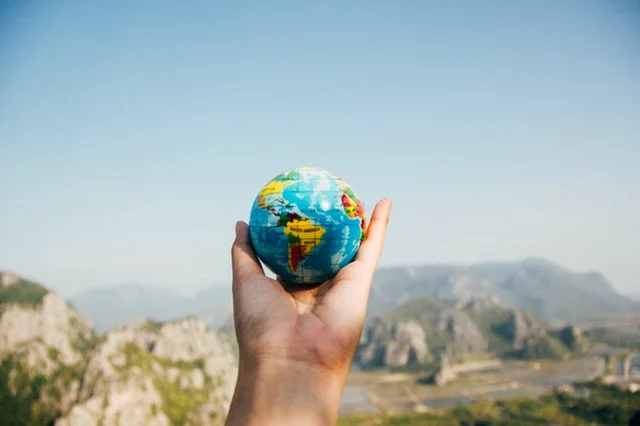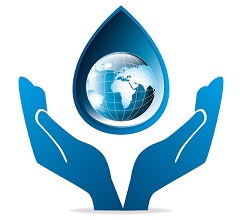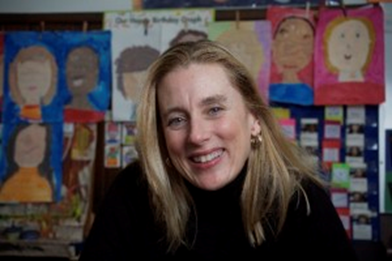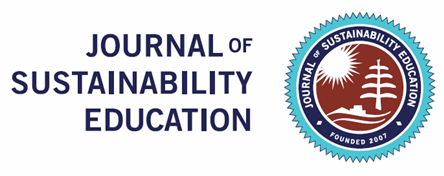INTRO BY JAIMIE CLOUD
The back story to the following wonderful article is worth sharing.  I received a call one day out of the blue from a Dr. Emma from Kenya. Dr. Emma told me that she was involved in developing an upcoming Forum for Kenyan leaders and that she had asked Peter Senge to be the keynote speaker at the forum. She went on to say that he had agreed to do it on one condition: “That the leaders play the Cloud Institute’s Fish Game first.” He went on to say that she could reach out to me for details, so she did. She downloaded the Fish Game from our bookstore and we set a time for a SKYPE coaching session to prepare her to facilitate it at the Forum. The SKYPE time came and went—no Dr. Emma. The next day, I received an email from her explaining that the Internet had gone down in the village and that she was hoping to re-schedule our conversation. No problem. We re-scheduled for the next day, and two hours before our scheduled conversation, Dr. Emma called me on the phone: “Jaimie?” she said, “I came to Nairobi to a hotel so that I could SKYPE with you today, and the electricity has just gone out. I am sitting in my hotel room with a cell phone, a candle and a print out of the Fish Game Facilitator’s guide. Can we talk now?” Of course we did—then and a few more times after that. As we unpacked the mental models of unsustainability and those that are more likely to help us to shape the future we want, Dr. Emma kept saying over and over, “Jaimie: Have you been to Kenya? Do you know these folks? Are you sure you don’t know them?” I explained that though I have in fact been to Kenya once, I did not know those individuals personally and that the mental models of un-sustainability seem to be universal and even archetypal. Tragic and true. In exchange for my time, I asked Dr. Emma to write about her experience facilitating the Fish Game to tribal leaders in Kenya. This is what she wrote:
I received a call one day out of the blue from a Dr. Emma from Kenya. Dr. Emma told me that she was involved in developing an upcoming Forum for Kenyan leaders and that she had asked Peter Senge to be the keynote speaker at the forum. She went on to say that he had agreed to do it on one condition: “That the leaders play the Cloud Institute’s Fish Game first.” He went on to say that she could reach out to me for details, so she did. She downloaded the Fish Game from our bookstore and we set a time for a SKYPE coaching session to prepare her to facilitate it at the Forum. The SKYPE time came and went—no Dr. Emma. The next day, I received an email from her explaining that the Internet had gone down in the village and that she was hoping to re-schedule our conversation. No problem. We re-scheduled for the next day, and two hours before our scheduled conversation, Dr. Emma called me on the phone: “Jaimie?” she said, “I came to Nairobi to a hotel so that I could SKYPE with you today, and the electricity has just gone out. I am sitting in my hotel room with a cell phone, a candle and a print out of the Fish Game Facilitator’s guide. Can we talk now?” Of course we did—then and a few more times after that. As we unpacked the mental models of unsustainability and those that are more likely to help us to shape the future we want, Dr. Emma kept saying over and over, “Jaimie: Have you been to Kenya? Do you know these folks? Are you sure you don’t know them?” I explained that though I have in fact been to Kenya once, I did not know those individuals personally and that the mental models of un-sustainability seem to be universal and even archetypal. Tragic and true. In exchange for my time, I asked Dr. Emma to write about her experience facilitating the Fish Game to tribal leaders in Kenya. This is what she wrote:
Leadership and Kenyan Renaissance, 2012
Background
Within the last decade, an unprecedented wave of development has swept through Africa. New faces appear across the landscape such as the Chinese, now common on some African City streets. Highways are being built to connect African countries together. One country leading in this forward development is Kenya. And, while commending this development, one Kenyan scholar believes that for this to work and still have an impact, Kenyan leadership will have to shift in a new direction. More so, because a wave of resource exploration is revealing that Kenya has lots of natural resources including oil, coal, geothermal, natural gas and wind power. For these resources to benefit the public, a new type of leadership will be critical.
“Kenya is undergoing the most aggressive devolution that the world has ever witnessed” (World Bank Report, Dec. 2011). The goal is to curb negative systemic social, economic, political and development issues. A recently amended Constitution (CK2010) seeks to reshape the way citizens relate with the government, and places a strong emphasis on principles of participation, transparency, and accountability. The new constitution avails ordinary Kenyans an opportunity to take the lead in the development of their counties, innovatively modeling a development that works for them. Leadership styles and models for the 21st Century will be critical and must be learned. This period of change comes at a time when Kenya is witnessing new recourse identification to include: oil, natural gas, wind power, geothermal power, coal, and biofuels on a limited scale. The Cloud Institute’s Fish Game simulation was played to create awareness about resources and leadership, deemed critical in the development of Kenya.
Dr. Theuri adds that Kenyan success will depend on how well leaders harness the county synergy to reap the benefits that are independently un-obtainable, and, which will be greater than the sum of all 47 Kenyan counties. Recognizing the need to identify available resources, and utilizing them without depleting will be key to local and national development. To achieve this, a “Shared servant leadership is critical, and it must be the new song”, says Dr. Theuri.
The Issue
But how does this rebirth take place, “Dr. Theuri asks”, when Kenyans and the international community are grappling with uncertainty and a lack of trust with the Kenyan leadership? A time when Kenyans are wondering whether the great hopes they have on the new constitution will come to fruition, given that it will be implemented by the same leadership that brought Kenya down. A leadership that is likely to protect its own interests, and has the power to do just that. What will support the hopes among Kenyans, that the strong roots of corruption, eroded ethos, joblessness, and hopelessness will no longer prevail, in a country where over 65% of the population is youth aged under 35years?
The Fish Game was used against this background, to communicate the role of servant leadership in resource mobilization and sustainability; to demonstrate the power of unselfish leadership in economic development, and the power of collaboration and re-union between the government and the people of Kenya in resource mobilization, utilization and sustainability.
The Forum
Dr. Theuri conducted the four-day IMPACT2030: Transformational Leadership Forum in Kenya 2012, with participants hailing from government and private corporations.
Participants were from government and corporate managers, CEOs and an ex-ambassador. Their role at the forum was to endure 12 hours a day, exploring the uniqueness of their counties and their country. Also, engaging in thought-provoking hands-on experiences, addressing global roots of poverty and how this is sustained.
Further, looking at servant-like, and the 21st Century leadership; mental models and change. An introduction to systems thinking and its application in a Kenyan context was an eye opener into leadership greed, corruption, root causes and impact on resources. Local invited speakers spiced the Forum. Forum participants became residents of the 48th Kenyan County by default, a simulated County that exposed them to the reality of living on 2$ a day, and as government planners, coming up with a plan how the 48th County in Kenya should develop and grow.
The Game
Groups of four teams (1, 2, 3, and 4) played the game. Teams 1, 3, and 4 depleted the fish in their first round. But, when playing Game # 3, they were able to play several rounds without depleting the fish pond. Team #2 did not deplete the fish even in the first round. Apparently, they had an individual who insisted that they could not take as much as they all wanted. She was the only female in the whole training crew. She stood her ground and sort of dictated that the group ration fishing from the word go, because without the rations, some people would get no fish. The group negotiated, disagreed, and finally settled to one fish per person. For this team, they were able to keep going for 5 rounds before the instructor stopped them, they could have gone on and on for a long time.
Lessons Learned
During the debriefing, the teams used Kenya as the Fish Pond to analyze the case of Kenyan resources and poverty. They were in agreement that in Kenya, people believe that:
-
Natural resources belong to the government so, no one takes care of them, and as a result, they are easily depleted by the citizens.
-
That the leaders have misused natural resources because they are the government property, and so, they own the (resources).
After the game, participants had two critical observations:
-
That if people were educated about the impact of resources on their lives, and the ownership they democratically possess, then, the citizens would protect those resources for their children, and future generations.
-
That development of Kenya lies on the hands of the Kenyan people.
The Fish Game served as a self-reflective process on the participant’s leadership, their management styles, and use of public resources. After the program, participants had the following to say: verbatim):
- “I learned that to be a leader, one must first become a human being.
- Learned that leadership is about taking a stand no matter how unpopular you become.
- If resources are used wisely, our nation will prosper.
- I learned how to optimize the gift of leadership.
- The vision that is important is that which people share.
- A great leader provides an opportunity for people to shape their future.
- That there is a lot of potential in our counties and Country.
- Strategies to transform a county, and even communities.
- Major learning was that our country is endowed with a lot of wealth and potential.
- The resources and potential in Kenya are enormous.
- If resources are used well, then the country will prosper.
- There is need to have a clear understanding of our National Goals and work together to achieve them.
- General overview of leadership at community level.
- Problems in agriculture sector in Kenya and how it can be advised through empowerment of community.
- Communication between leadership and the grassroots.
- How to contribute to community development”.
Conclusion
In summary, the learning from the Fish Game was powerful. It was amazing that a simple game of Fish could provide such deep penetration, quest, and awakening for knowledge and skills building in areas that matter the most in life. It was clear that simplified communication of knowledge has the ability to provide a deeper meaning of the subject. Participants did grasp the power of servant and team oriented leadership. They gained a better understanding about resource utilization. They realized that Kenya has lots of resources which, if properly utilized are enough for all, and for future generation. There was a deep self-reflection, and change of mind sets, on leadership and resource utilization. Participants left the forum fired up to go make change in their leadership positions.
The Leadership Forum would not have been such a success without the great contribution of renowned trainers and speakers such as Dr. Peter Senge, who joined the Forum participants in Kenya via video conference from USA. Dr. Peter Methabula from South Africa; Dr. Jonathan Ciano, the CEO Uchumi Kenya; Peter Kenneth, the Assistant Minister in the Ministry of National Planning and Development; and Dr. Emma Theuri, the convener.
Special thanks go to Jaimie P. Cloud, President of The Cloud Institute for Sustainability Education. Jaimie is commended for her flexibility and zeal in getting the work done. Being in the US at the time, she spent over three hours on a Phone Training about the Fish Game with Dr. Theuri who was in Kenya at the time. (The only communication channel they had, after several power outage experiences in their earlier attempts to accomplish the task via Skype). Without this effort, the Fish Game exercise would not have taken place.
Dr. Emma Theuri is the Founder, Institute for Promotion of Sustainable Community Development (IPSCoD), an organization with a focus on transformational leadership as a tool for change and empowerment.
References:
-
The Fish Game. Facilitator’s Guide. Developed and published by The Cloud Institute for Sustainability Education, 2012 Edition.
-
Laurie P. & Diebel. A. Bridging the Divide between the Public and Government. A Review of Research KF. Connections, Kettering Foundation’s Washington, D.C. Summer, 2006.
-
Kenya Constitution 2010.
-
Kenya, Vision2030.
















